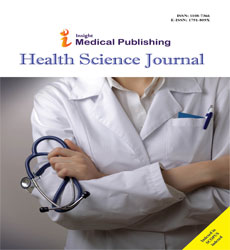Abstract
Anthropometry and Body Composition of Elite Brazilian Soccer Players according to the Playing Position
Aim: The aim of this study was to examine the differences in anthropometric characteristics and body composition of elite soccer athletes, according to playing position and function performed.
Methods: Ninety-seven elite athletes (24.68 ± 4.21 years) from a first division team of Brazilian soccer were assessed for body mass, stature and seven skinfolds, to determine body mass index, fat percentage, as well as fat mass and fat-free mass. Differences in the anthropometric characteristics and body composition, according to playing positions and function performed were evaluated with the Multivariate Analysis of Variance (MANOVA).Quantitative chances of finding differences and effect sizes (ES) were also interpreted.
Results: Goalkeepers (GO) and central defenders (CD) had likely to most likely higher stature and body mass than fullbacks (FB), defensive (DM) and offensive (OM) midfielders, and forwards (FW) (ES varying between 0.92 and 2.62); DM had also higher body mass than OM (ES=1.04). GO likely to very likely had higher body fat percentage and fat-free mass than other positions (ES varying between 1.49 and 2.07). OM likely to very likely had lower fat mass than GO, CD and DM (ES varying between 1.04 to 2.06). FB likely to very likely had also lower fat mass than GO and CD (ES=1.29 and 1.73, respectively).
Conclusion: Our results provide useful information for help coaches and other soccer professionals in the planning and control of training and nutrition in elite Brazilian soccer athletes.
Author(s):
Edvaldo Virgínio da Silva Junior, Inaldo Freire Cavalcanti, Caio Ferreira Santos, Thaliane Mayara Pessôa dos Prazeres, Willemax dos Santos Gomes, Matheus Santos de Sousa Fernandes, José Francisco da Silva, Jéssica Gomes Gonçalves, Marcos André Moura dos Santos and Rafael dos Santos Henrique
Abstract | Full-Text | PDF
Share this

Abstracted/Indexed in
- Google Scholar
- Genamics JournalSeek
- China National Knowledge Infrastructure (CNKI)
- CiteFactor
- CINAHL Complete
- Scimago
- Electronic Journals Library
- Directory of Research Journal Indexing (DRJI)
- EMCare
- WorldCat
- University Grants Commission
- Geneva Foundation for Medical Education and Research
- Secret Search Engine Labs
- Euro Pub
Open Access Journals
- Aquaculture & Veterinary Science
- Chemistry & Chemical Sciences
- Clinical Sciences
- Engineering
- General Science
- Genetics & Molecular Biology
- Health Care & Nursing
- Immunology & Microbiology
- Materials Science
- Mathematics & Physics
- Medical Sciences
- Neurology & Psychiatry
- Oncology & Cancer Science
- Pharmaceutical Sciences

